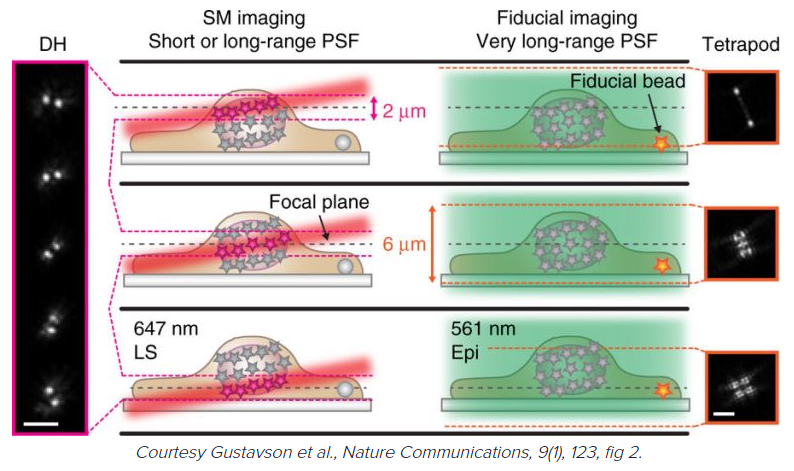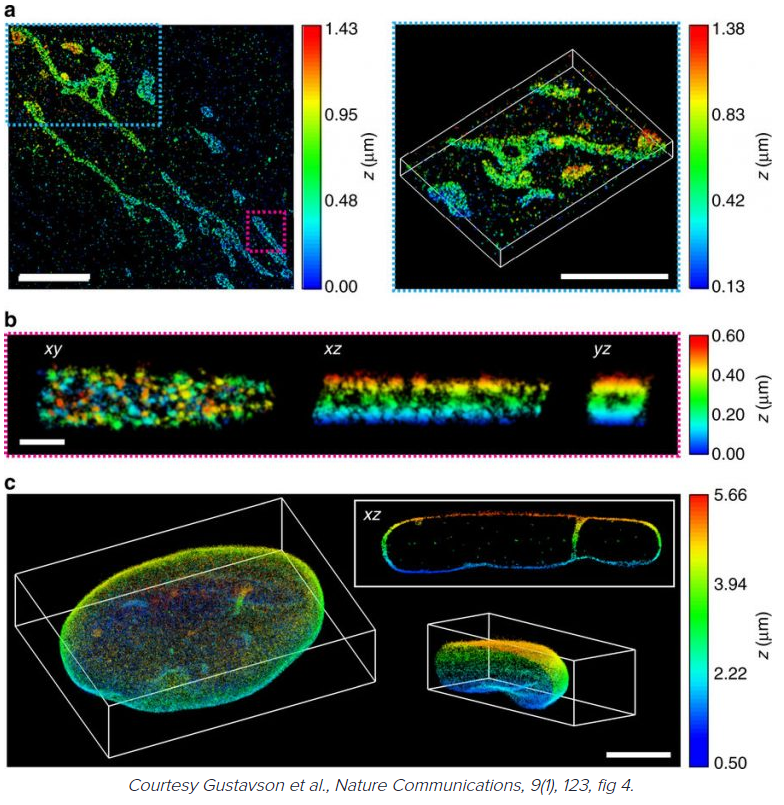Find out the challanges behind light microscopy and how we solve them.
Written by our partner Double Helix Optics
A longstanding challenge of light microscopy is being able to study sub-cellular objects with both extended depth and high precision. Scientists have revived a method called light sheet or selective plane illumination microscopy (SPIM) in an effort to gain axial precision while limiting sample exposure to light.
In SPIM, a thin plane of light is projected through the sample perpendicular to the detection axis, illuminating a thin, in focus, section of the sample. While a thin light sheet is desirable to improve the axial resolution of the system, it often limits the imaging volume of the system.
Additionally, the confined geometry of many light sheet systems limits the detection objective to a relatively low NA (~1 or lower), causing a significant reduction in light efficiency, as well as a loss of resolution.
For this reason, many existing light sheet systems lack the resolution needed to image sub-cellular objects, specifically when super-resolution imaging is required.

A recently published article by Gustavsson et al. in Nature Communications [Gustavsson, A.-K., Petrov, P. N., Lee, M. Y., Shechtman, Y., & Moerner, W. E. (2018). 3D single-molecule super-resolution microscopy with a tilted light sheet. Nature Communications, 9(1), 123. https://doi.org/10.1038/s41467-017-02563-4] demonstrated a new method, termed TILT3D, to address these challenges by using a tiltedlight sheet in conjunction with double-helix (DH-PSF) and tetrapod engineered point spread functions.
TILT3D enables low-background, 3D super-localization of single molecules on the surface of a cell as well as 3D super-resolution imaging inside of the cell. The TILT3D setup enabled the researchers to image and reconstruct structures throughout whole mammalian cells including mitochondria within the cell as well as the full nuclear lamina.

TILT3D can be implemented using a standard inverted microscope with minimal custom parts. Set up of the phase masks requires only the addition of a small number of optical elements to the collection path.
Gustavsson and colleagues created a powerful method that offers four important features:
- High localization precision of single molecules in 3D over the entire axial range of a mammalian cell via a few thick light sheet slices combined with imaging with engineered PSFs in each slice
- Combined with blinking dyes to achieve STORM as an example, this method immediately provides super-resolution imaging of cellular structures
- TILT3D offers the usual light sheet advantages of reduced photobleaching and photodamage of the sample AND drastically improves the localization precision of single molecules while relaxing the spatial constraints typical of light sheet microscopes.
- Easy and cost-efficient to implement with a flexible design that allows for imaging close to a conventional coverslip using a high NA detection objective and easy switching between illumination modes, lasers, and PSFs.
Source: Double Helix Optics 2019
Other Blogs/Articles that may be of interest:
- Why is Mid-IR Light so Important?
- Engineered Point Spread Functions (PSF) for Single Molecule Localisation Microscopy (SMLM)
- Nanoscopy for less than £100k?
- Understanding the jargon of LCOS Spatial Light Modulators (SLMs)
- Spatial Light Modulator Applications
For more information contact us here:






























